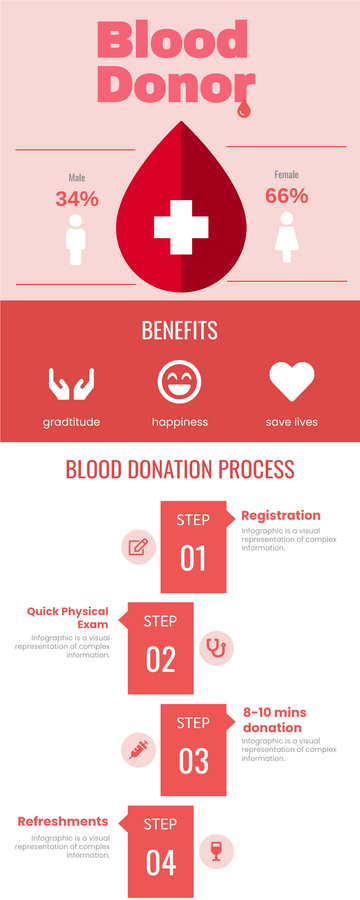Blood Donor Infographic
According to the World Health Organization, nearly 50 percent of the 108 million people who donate blood globally each year are collected in high-income countries that make up less than 20 percent of the world’s population. This means that patients in many areas are not receiving blood transfusions in time. Or get safe blood. In fact, besides saving people’s lives, blood donation also has many benefits to one’s health. Therefore, donating blood regularly is an altruistic act.
“Your blood is replaceable. A life is not.”
What Are the Benefits of Regular Blood Donation?
- Better blood flow – According to a study in the American Journal of General Medicine, 88 percent of blood donors are less likely to have cardiovascular disease. Repeated donations help blood flow more smoothly, reduce damage to the lining of blood vessels and reduce the chance of cardiovascular problems.
- Minor health check – Before donating blood, you must first take your temperature, pulse, blood pressure and hemoglobin level. Then take the collected blood and test it for 13 different infectious diseases, including type B and type C. If the test results are positive, such as hepatitis or AIDS, you will be informed immediately.
- Boosts metabolism – Donating blood can boost your metabolism. Because red blood cells have a life cycle of 120 days, both old and new blood are pumped out on average. Thus, the proportion of new blood in your body increases. The younger blood cells flow faster and cover less of the blood vessel walls, which are healthier.
- Maintain your iron balance – a healthy adult has about 5 grams of iron. When you donate a unit of blood, you lose about a quarter of a gram of iron. However, the iron lost from blood donation can be replenished daily.


